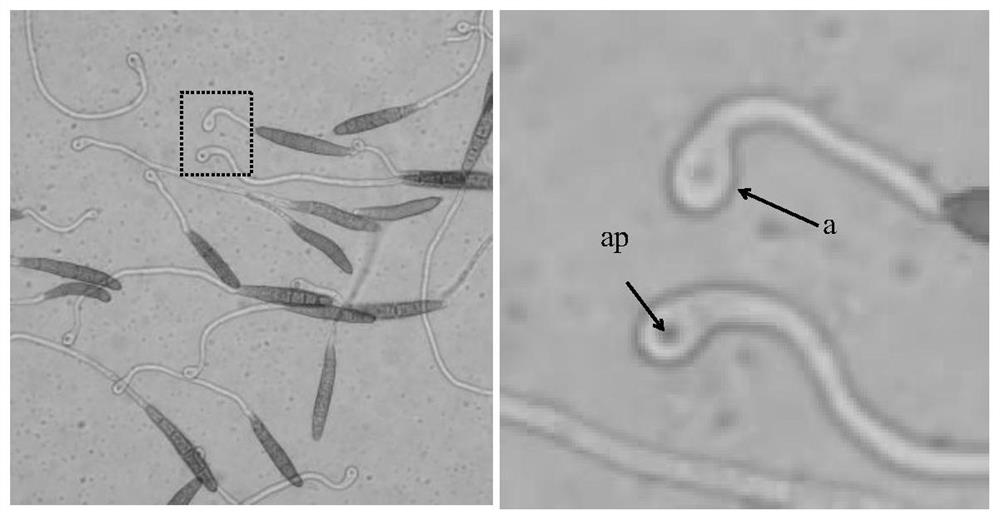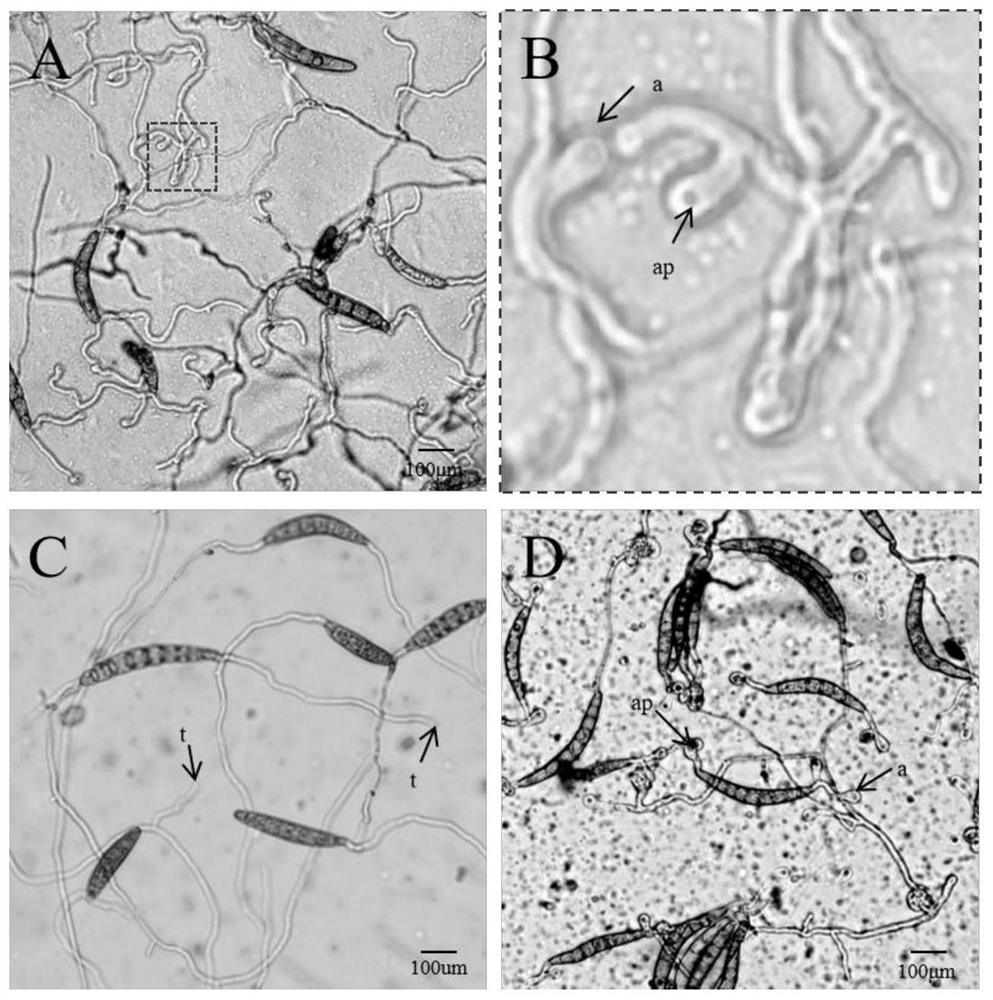A material for inducing appresses of corn leaf spot fungus and its preparation method and application
A technology of corn leaf spot fungus and resin, applied in the field of research on the infection mechanism of plant pathogenic fungi, can solve the problems of inability to build a high-throughput system, high brittleness of cellophane, cumbersome operation, etc., and achieve high induction efficiency, fast drying speed, and preparation simple effect
- Summary
- Abstract
- Description
- Claims
- Application Information
AI Technical Summary
Problems solved by technology
Method used
Image
Examples
Embodiment 1
[0047] A material for inducing appressorium of Pseudomonas maize, which is made from the following raw materials by volume:
[0048] 10mL of Si-PUD resin copolymerized with organosilicon diol and aliphatic isocyanate,
[0049] Self-curing liquid polytetrafluoroethylene resin 10mL.
[0050] The above-mentioned preparation method of the material for inducing the appressorium of Pseudomonas maize, comprises the following steps:
[0051] (1) Take 10 mL of Si-PUD resin copolymerized with silicone diol and aliphatic isocyanate, and 10 mL of self-curing liquid polytetrafluoroethylene resin, put them in a 50 mL beaker, and put a magnetic stirrer rotor into the beaker, The beaker was placed on a magnetic stirrer and stirred for 10 min to obtain a mixed coating;
[0052] (2) Use a pipette with a range of 5mL to draw 3mL of the mixed paint and evenly apply it to a petri dish with a diameter of 90mm, place the petri dish in a blast drying oven, dry at 80°C for 30min, and the paint is co...
Embodiment 2
[0056] The epiphyte induction experiment was carried out with B. maize as the test pathogen:
[0057] The conidia suspension of B. maize is added dropwise to the Si-PUD+PTFE material coating prepared in Example 1, and after induction at a constant temperature of 25°C for 12 hours, the induction is observed under an optical microscope;
[0058] And set up a control group that uses cellophane as a substrate for appressorium induction of B. maize:
[0059]Pour a small amount of water agar with a concentration of 2% into a petri dish with a diameter of 90mm, cover the bottom of the petri dish, and let it stand for 20 minutes. After the water agar solidifies, spread the cellophane on the water agar, and drop the same amount of corn on the cellophane The conidium suspension of B. spp. was kept at a constant temperature of 25°C in the dark for 12 hours, and the induction was observed under a light microscope.
[0060] like figure 1 As shown, the conidia of B. maize was cultured on ...
Embodiment 3
[0062] The epiphyte induction experiment was carried out with Pseudomonas maize as the test pathogen:
[0063] The suspension of conidia of P. zeaeii was added dropwise to the Si-PUD+PTFE material coating prepared in Example 1, and after induction at a constant temperature of 25°C for 12 hours, the induction was observed under an optical microscope;
[0064] And set up a control group that uses cellophane as a substrate for appressorium induction of B. zeae:
[0065] Pour a small amount of water agar with a concentration of 2% into a petri dish with a diameter of 90mm, cover the bottom of the petri dish, and let it stand for 20 minutes. After the water agar solidifies, spread the cellophane on the water agar, and drop the same amount of corn on the cellophane Microspot conidia suspension was kept at a constant temperature of 25°C in the dark for 12 hours, and the induction was observed under a light microscope.
[0066] Set up the control group of Si-PUD resin copolymerized w...
PUM
 Login to View More
Login to View More Abstract
Description
Claims
Application Information
 Login to View More
Login to View More - R&D
- Intellectual Property
- Life Sciences
- Materials
- Tech Scout
- Unparalleled Data Quality
- Higher Quality Content
- 60% Fewer Hallucinations
Browse by: Latest US Patents, China's latest patents, Technical Efficacy Thesaurus, Application Domain, Technology Topic, Popular Technical Reports.
© 2025 PatSnap. All rights reserved.Legal|Privacy policy|Modern Slavery Act Transparency Statement|Sitemap|About US| Contact US: help@patsnap.com



